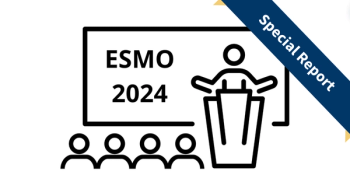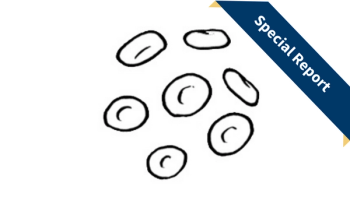
Air Pollution and Cancer Risk Found Among Black, Low-Income Residents in Louisiana
Investigators at Tulane University have identified a relationship that linked cancer incidence and cancer risk from air pollution in Louisiana among Black or low-income communities, which were more likely to be affected than other populations.
Cancer clusters are often difficult to identify and can prove to be difficult to pinpoint and support with sufficient data. Louisiana has been recorded as having some of the worst cancer and cancer-related death rates in the United States.1 Residents who live along a particular stretch of the Mississippi River have demonstrated a higher risk of developing cancer than others.
Spurred by the industrialized communities located along the Mississippi River between Baton Rouge and New Orleans, investigators at the Tulane Environmental Law Clinic conducted a study investigating correlations between air pollution and cancer rates in Louisiana, with a special eye on the area known as Cancer Alley. A relationship was found that linked cancer incidence and cancer risk from air pollution in Louisiana among Black or low-income communities, which were more likely to be affected than other populations.2
In 2019, the national cancer rate for the US was 439 new cases per 100,000 men and women, according to the CDC.1 The Louisiana statewide cancer rate was 469 new cases per 100,00 individuals.
Investigators in the study created a scatterplot of the untransformed data. They noted a positive correlation between cancer incidence and estimated cancer risk from air toxins in parishes who were predominantly Black and low income. Cancer risk from air toxins were measured using the Environmental Protection Agency’s 2005 National Air Toxics Assessment.3
Investigators created 2 other scatterplots comparing cancer incidence rates and air toxin cancer risk for the highest-income census tract (the first quartile) and the lowest-income census tract (the fourth quartile). They found that the lower-income census tract had a clearer correlation between these 2 measures (r = 0.25, P = .0005) vs the highest-income census tract (r = –0.11, P = .12).
A similar correlation was seen when comparing these measures according to race, specifically by the number of Black residents as a proportion of the population. Tracts with a disproportionate amount of Black residents were seen to have higher cancer incidence rates (fourth quartile: r = 0.13, P = .07; first quartile: r = –0.10, P = .16).
In an interview with Targeted Therapies in Oncology™, Kimberly Terrell, PhD, a research scientist, director of community engagement at Tulane University in New Orleans, and lead study author, addressed the relationship between race and poverty with air pollution and cancer rates in Louisiana. “There’s a strong correlation between race and poverty in Louisiana. It’s hard to know which of those [variables] is driving this relationship between pollution and cancer. [However], we do know that when we [evaluate] either the most impoverished or the most predominantly Black census tracts…when we take that top 25%...among those communities, we look at the relationship between pollution and cancer rates. We see a very strong association wherein communities that have higher levels of cancer-causing air pollution have higher cancer incidence rates,” she said.
Cancer incidence rates were measured using 10-year average annual rates for all malignant tumor types from the Louisiana Tumor Registry, which reflected case diagnoses from 2008 to 2017.4Demographic information included 5-year estimates of race, poverty, and occupation using the US Census Bureau 2015 American Community Survey, with data collected from 2011 to 2015.
Cancer risk was positively correlated with the percentage of workers in manufacturing occupations (r = 0.07, P = .041). Black residents were not often found to have construction (r = –0.23; P < .0001) or manufacturing occupations (r = –0.11, P = .003). Low-income residents also did not often have occupations within the construction (r = –0.11, P = .003) or manufacturing industries (r = –0.08, P = .024). Investigators also found that smoking and obesity were positively correlated with each other (r = 0.30, P < .0001).
Terrell explained further why “it’s totally intuitive to think air pollution might affect impoverished vs affluent neighborhoods differently.” She said it would be difficult or not possible to connect toxic exposure to health outcomes in more affluent neighborhoods for several reasons. These reasons include possibly more airtight homes, those who may have moved into the area recently, and those who are higher earners and who may spend less time in their local community, whether it be commuting to work outside their community or having the means to travel outside of their hometown more frequently. “A lot of the communities in Louisiana that are heavily industrialized [are] our historic Black communities, where even if [individuals] had the means to move away, they wouldn’t want to because they’re the 5th, 6th, 7th generation in that neighborhood, and sometimes in that home…and that the passing down [of the home] is an important part of intergenerational wealth,” Terrel said.
She also added that to more accurately measure the exposure of air toxins, they would require more research that can detail the residential history of people across the parishes. The key takeaway is that although there are so many other factors that may add more value to the data that have not been measured yet, there is an association with poverty levels and Black communities with higher levels of air pollution and higher cancer rates.
When asked about the types of air toxins emitted in these areas, Terrell mentioned benzene, which is commonly released from oil refineries, petrochemical plants, and even from common vehicle emissions. Airborne formaldehyde would also be present because of secondary formation. “[Census tract] 708, St John [the Baptist] Parish, has the highest pollution-related cancer risk estimated for any census tract in the US, and that’s largely due to a neighboring facility that emits a carcinogen called chloroprene. It’s the only plant in the country that produces chloroprene.” In their analysis of the area between Baton Rouge and New Orleans, St John the Baptist Parish had a pollution-related cancer risk of 1501.1 per million, and the lowest pollution-related cancer risk within this specified region was census tract 279.02 (Jefferson Parish), with 24.8 per million.1
Oncologist Weighs In
In an interview with Targeted Therapies in Oncology™, Gerald Miletello, MD, of the Hematology Oncology Clinic in Baton Rouge, said he does not believe air pollution is a significant driving factor in the cancer rates that exist in Cancer Alley, and the lifestyle of those who reside in this area is most likely the cause for cancer rate and mortality. “I don’t see a higher [cancer rate] in that area. Mortality is higher because [individuals] are diagnosed later and their disease is further advanced. A lot of that is attributed to lifestyle [factors]. We’re not seeing much higher numbers in Cancer Alley,” Miletello said. He cited the Louisiana State University Public School of Health Tumor Registry (the same registry used in the study) and said the cancer rates in this specific region are not so much different than the rest of the state.
Miletello focused on the types of lifestyle habits that are pervasive throughout this community, such as poor diet, lack of exercise, smoking, and limited access to required health care. “[From] my understanding…it’s more the lifestyle than it is the air pollution. The more I’m reading and the more I’m seeing—our numbers just aren’t that much higher than the rest of the nation. Our mortality is just higher, and our [first] diagnosis [occurs] later [in disease stage],” Miletello said.
He also recalled a specific time when a patient came in 6 months after diagnosis and had lost 50 lb. When Miletello asked the patient why he had not come in earlier, he responded that he did not see a reason why losing weight would require a doctor’s visit and that he thought the disease would get better with time, which introduces another potential factor: lack of education from a health-related standpoint. “If he’d come in 6 months ago, when he first had a symptom, [that would have been] potentially curable. Now he’s gone from stage I to stage IV,” he said. After recalling this story, Miletello mentioned that “pollution is bad, but I think if we put a different population of people in there, I don’t think you’d see this higher incidence of cancer.”
Is There a Cluster?
It’s difficult to tell what and which carcinogens or unhealthy behavior has caused this discussion concerning Louisiana and its famously industrialized corridor, Cancer Alley. However, what can be agreed upon is that there is a pollutive presence in Louisiana, and there is a fundamental issue with the cancer and cancer-related death rates occurring in Louisiana—enough to be recognized and compared with the national average and other states in the US. In this article, we hear from 2 sides who seem to have a different approach on how to interpret this problem. Terrell may have said it best: “One challenge is that clinical oncologists see the human side, and that’s what they’re connected to. They may not be as plugged into the statistical side.” The flip side to this is that some things may be statistically significant but may not be clinically significant.
Whether Cancer Alley is worthy of its name remains unclear. The potential causes of what contributes to Louisiana’s cancer rates also remains unclear. As with most suspected cancer clusters, more data are needed. However, Terrell’s data, which found compelling correlations among Black and low-income residents, can guide how future cancer studies in Louisiana are conducted. “There have only been a handful of studies on this topic in Louisiana, and the previous studies were statistically underpowered…. None of those studies accounted for the possibility that pollution might affect rich vs [low-income] neighborhoods differently.”
References:
1. Leading cancer cases and deaths, all races and ethnicities, male and female, 2019. CDC. Accessed July 6, 2022. https://bit.ly/3P3pGZs
2. Terrell KA, St Julien G. Air pollution is linked to higher cancer rates among black or impoverished communities in Louisiana. Environ Res Lett. 2022;17(1):014033. doi:10.1088/1748-9326/ac4360
3. An overview of methods for EPA’s National-Scale Air Toxics Assessment. US Environmental Protection Agency. January 31, 2011. Accessed July 6, 2022. https://www.epa.gov/sites/default/files/2015-10/documents/2005-nata-tmd.pdf
4. Maniscalo L, Yi Y, Lefante C, Hsieh M, Wu XC. Louisiana tumor registry: cancer incidence in Louisiana by cancer tract 2008-2017. LSU Health.March 2021.Accessed July 6, 2022. https://bit.ly/3nIz2OJ









































